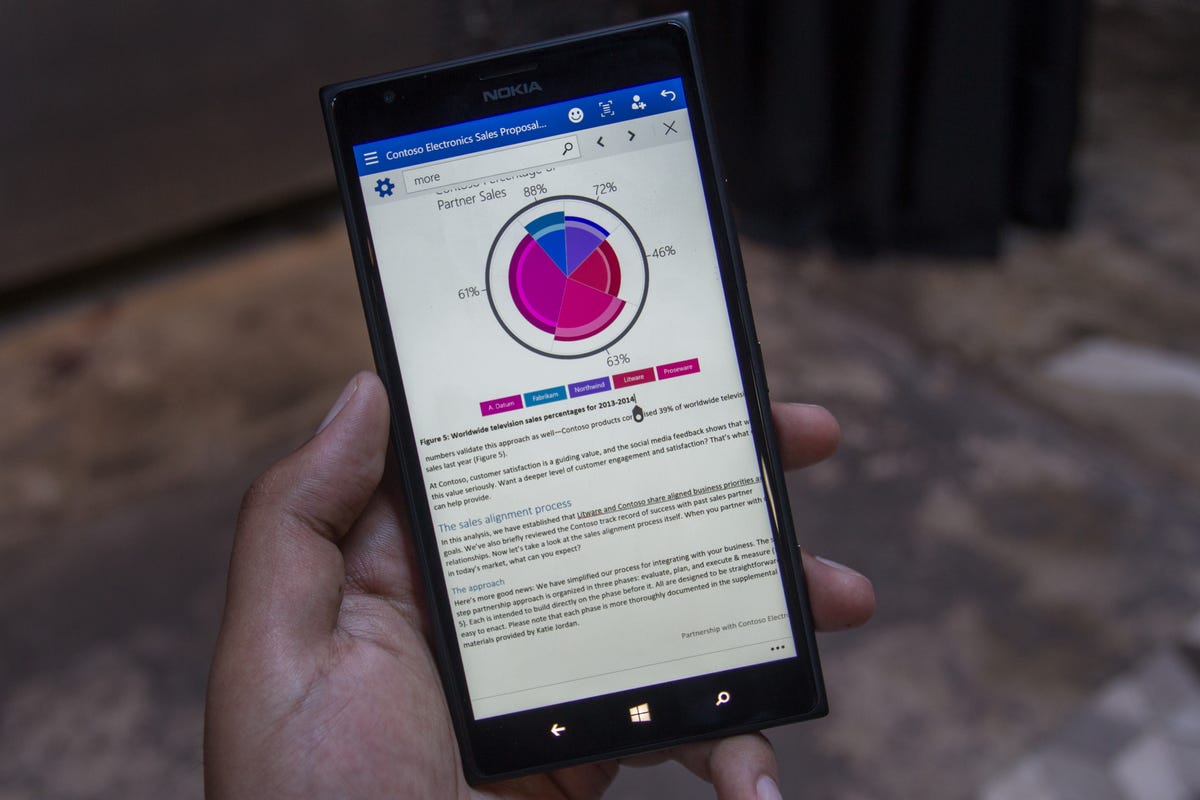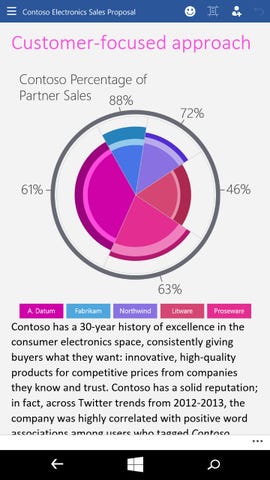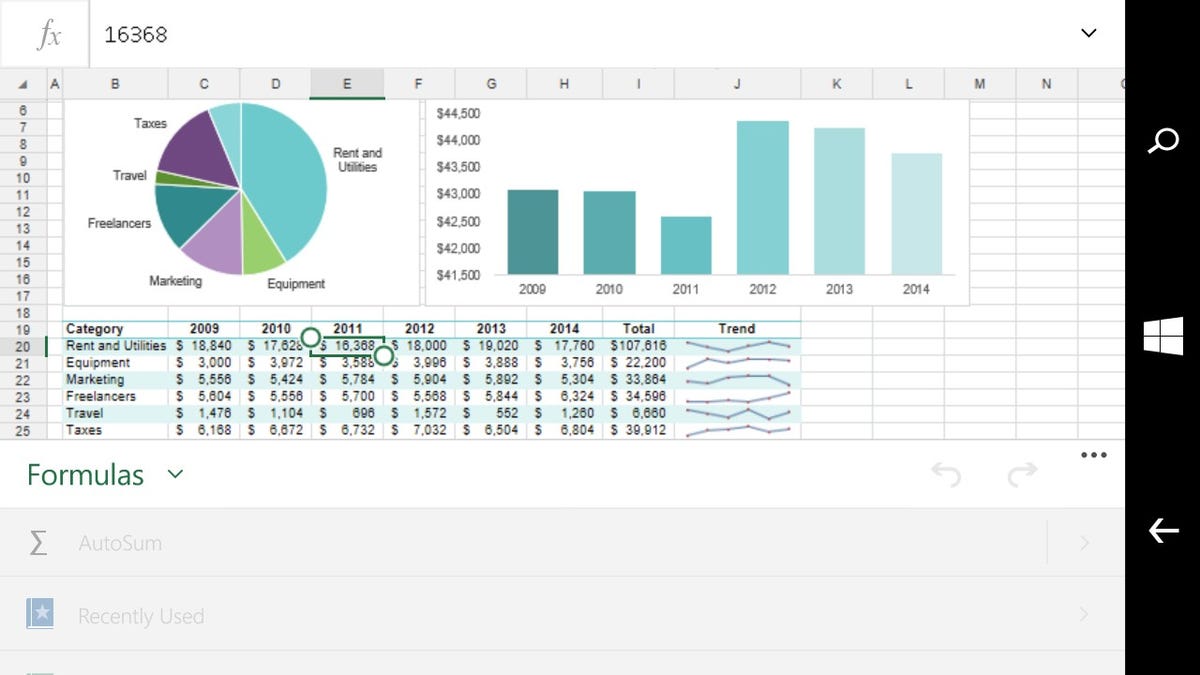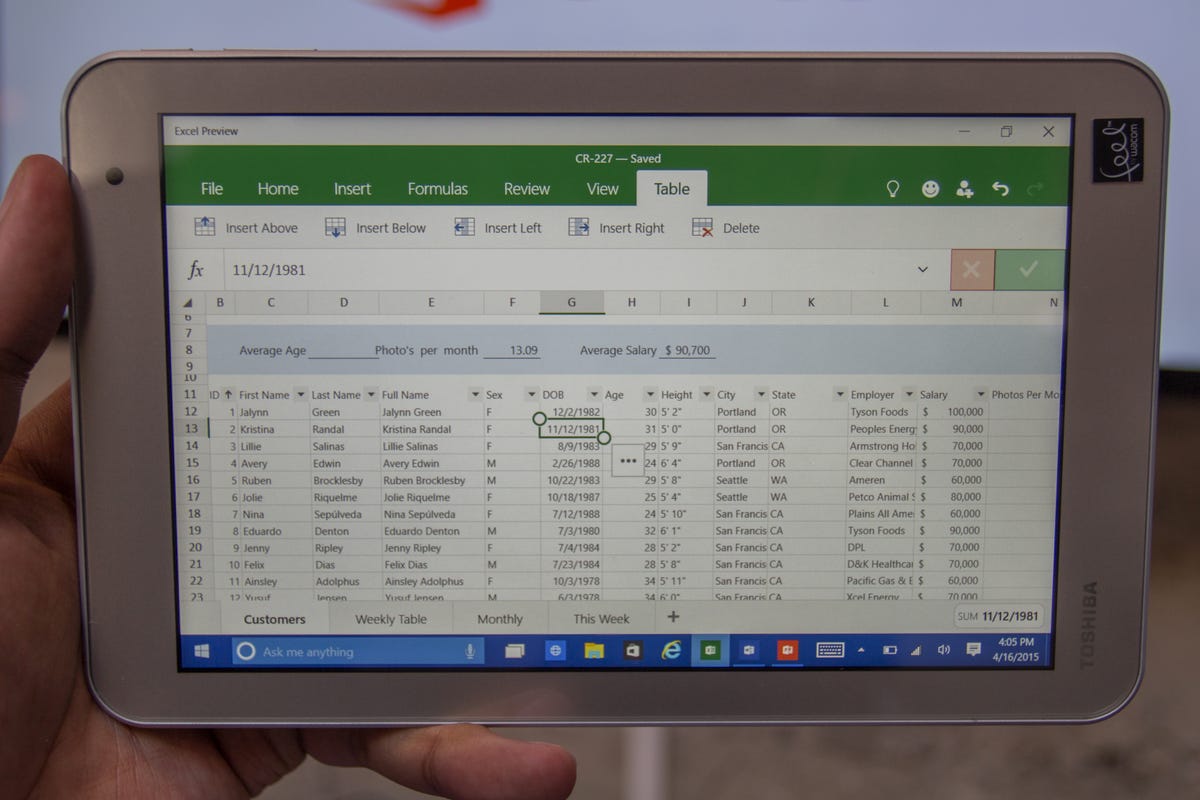
Nate Ralph/CNET
Microsoft is bringing previews of its universal Office apps — Word, Excel and Powerpoint — to Windows smartphones. The new apps will come to the Windows 10
Technical Preview for Windows phones in late April and will offer a taste of Office 2016, and yet another glimpse at Microsoft’s plans to make Windows 10
the .” Windows 10
is set to officially launch sometime this summer.
“Documents are a relic of when people printed things out” says Jared Spataro, the general manager of Office Marketing at Microsoft. During the demo, Spataro showed Word running on a Nokia Lumia 1520, which he admits is a rather cramped place for writing and editing documents. But with Windows 10
, Microsoft is taking pains to address areas the company has historically neglected: mobile devices, like tablets and smartphones.


Microsoft
Most of us aren’t printing quite as much as we used to, and the documents we are creating are getting a lot more complex: images, tables, and charts dotted about are commonplace. The upcoming versions of Word offer a new Reading mode: press it and all of the elements of the document you’re reading are “reflowed” to fit your device. That might mean ditching the archaic “sheet of paper” metaphor in favor of streamlined text — or columns of text, if you’re on a tablet — interspersed with images and the like. Double-click on an image or chart and it enlarges so you can appreciate the details.
I remarked that it looks and feels just like the web, and Spataro nodded — that’s entirely the point. Mobile websites, apps like Pocket, and Windows 8’s own Reading mode have all but conditioned many of us to see documents not as sheets of paper, but as flowing text. You can tweak things to your liking, too, and adjustments like changing the size of the text won’t affect the original document.
My time with the new Office for Windows phone was admittedly short, but it’s clear that it’s designed, as Spataro explained, for “On the Go” productivity. Tapping out long documents on a smartphone display will never be a great experience, but these universal apps mean you won’t be missing out on key Office features, or forced to break out a laptop when you want to edit a document. You’ll probably want to, as I certainly didn’t enjoy creating a quick-and-dirty spreadsheet on a smartphone. But you’ll have most of Office’s toolbox at your fingertips, which will be a powerful tool for the busy mobile professional.


Microsoft
This isn’t entirely new; we got our first glimpse of the finger-friendly versions of Office for Windows PCs back in February, when preview versions of Excel, Word and PowerPoint were first made available in the Windows 10
Technical Preview on PCs. And Microsoft has made mobile versions of Office available for Android and iOS devices. But when these apps arrive at the end of the month, it’ll be our first real taste of what our computing life with Windows 10
will be like: universal apps that share a codebase, not to mention much of their interfaces, and offer near-identical functionality.
The demonstration I saw was focused on these universal apps on Windows phones, but other devices won’t get left behind. There will still be a proper desktop version of Office 2016 that shares much of the UI elements of its universal, mobile-based siblings, but packs all of the power and features we’ve come to expect from Office applications. There wasn’t much more information about how different this version might be, however.


Nate Ralph/CNET
I was also told that Microsoft, while respectful of Google, a “great competitor in the space,” is confident that the Office app experience will be superior to what we might find from the Google Drive suite of apps. Microsoft isn’t ignoring competing platforms, either. Let’s say you’ve got an iPad or Android tablet: if a colleague uses Word’s sharing functionality to send you a document, you’ll be able to open it to view and edit, right in Microsoft’s Word Online, free of charge. Of course if you’ve got the Microsoft Word app installed, it’ll open there instead.
And that leads me to pricing: Microsoft has yet to reveal how much Office 2016 will cost, or what we’ll be expected to pay for. The Office suite preview on Windows 10
is currently free to try. But like the iOS and Android apps, there’s a freemium pricing model: attempt to activate Word’s Track Changes feature, for example, and you’ll be prompted to sign up for an Office 365 subscription.
The universal Office preview for Windows 10 on mobile will be available by the end of April. I will of course be diving in the moment it’s ready, so stay tuned for more updates.




